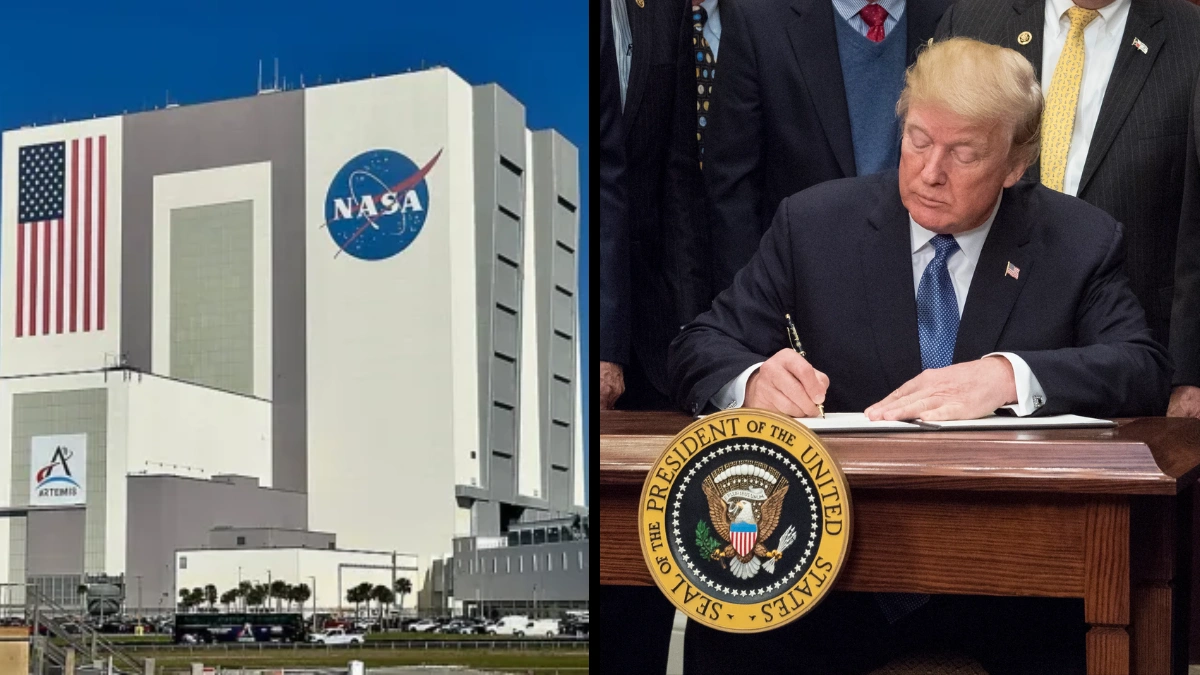
The Trump administration is moving to end two NASA missions that give vital information on global agriculture and climate change. These missions have been essential in tracking greenhouse gas emissions and forecasting challenges to food security because they keep an eye on plant health and carbon dioxide levels. Scientists, decision-makers, and farmers may lose access to a rare and extremely reliable source of information if they shut down.
Budget Cuts Target Crucial Climate Monitoring Programs

The Orbiting Carbon Observatory (OCO) missions are not included in the Trump administration’s fiscal year 2026 budget proposal. These include a sensor put on the International Space Station in 2019 (OCO-3) and a free-flying satellite launched in 2014 (OCO-2). In addition to monitoring plant photosynthesis, which can detect droughts and forecast food shortages, both instruments are made to track carbon dioxide emissions and absorption with unparalleled precision.
NASA said in an email that the funding drop was made in an attempt to “align with the President’s agenda and budget priorities.” Climate experts have vehemently disagreed with the agency’s assertion that both missions were “beyond their prime mission.”
Indian Rupee’s Decline May Offset U.S. Tariff Impact, Say Economists
Retired NASA Scientist Calls Missions “National Assets”

The Orbiting Carbon Observatory (OCO) missions are not included in the Trump administration’s fiscal year 2026 budget proposal. These include a sensor put on the International Space Station in 2019 (OCO-3) and a free-flying satellite launched in 2014 (OCO-2). In addition to monitoring plant photosynthesis, which can detect droughts and forecast food shortages, both instruments are made to track carbon dioxide emissions and absorption with unparalleled precision.
NASA said in an email that the funding drop was made in an attempt to “align with the President’s agenda and budget priorities.” Climate experts have vehemently disagreed with the agency’s assertion that both missions were “beyond their prime mission.”
In addition to tracking carbon, the devices also pick up the subtle glow of photosynthesis in plants, which aids in crop health evaluation, early drought detection, and food scarcity prediction—a crucial skill in areas susceptible to famine and civil upheaval.
Climate Scientists: A Shortsighted and Dangerous Move

The administration’s decision to terminate the missions has drawn harsh criticism from numerous experts. University of Michigan climate scientist Jonathan Overpeck referred to the action as “extremely shortsighted.”
“These satellites offer data that is essential for managing the effects of climate change, not only globally but also here in the United States,” Overpeck stated. “It is reckless to shut them down now, when the climate crisis is getting worse.”
According to University of Pennsylvania climate scientist Michael Mann, the administration’s true motivation might be political: “The idea seems to be that climate change will simply vanish from American consciousness if we cease measuring it.”
Taiwan’s Economy Faces Major Threat as U.S. Mulls Semiconductor Tariffs
Political Battle in Congress

Congress will now make the final choice because funding for the missions is scheduled to expire on September 30 at the end of the current budget year. The current House budget bill would stop funding the OCO missions, which is in line with Trump’s demand. On the other hand, the Senate version would keep the missions intact.
Congress is now in recess, therefore the future is unclear. A continuing resolution may be passed by lawmakers to temporarily preserve current funding levels if they are unable to come to a budget agreement by October 1. However, other senators worry that the Trump administration would attempt to prevent or postpone funding anyhow.
Acting NASA Administrator Sean Duffy received a warning from Congressional Democrats last month that it would be unlawful to stop missions or withhold money that Congress has already allocated.
India’s Russian Oil Purchases Draw Sharp Rebuke from US Official
Seeking International and Private-Sector Support

Crisp is developing a contingency plan to save the missions as uncertainty increases. International partners, particularly European and Japanese agencies, are being actively courted to help finance and run the OCO-3 sensor aboard the ISS.
As of August 29, NASA has announced that it would begin accepting proposals from external entities to assume the mission.
On the other hand, the OCO-2 satellite, which independently orbits and offers more extensive worldwide coverage, may be deactivated and brought down, possibly igniting in the Earth’s atmosphere. NPR reports that NASA has already started internal talks about how to shut off the satellite.
According to Crisp, he and his associates are looking for ways to hand over ownership of OCO-2 to a third party operator, potentially involving international partners. However, as specific authorisation would be needed to transfer ownership of a U.S. satellite to a non-U.S. company, this poses legal and diplomatic issues.
Turning to the Private Sector: A Last Resort?

Crisp acknowledged that they are even contacting private contributors, such as billionaires and charities, to raise money for the missions in a desperate move.
“We’re addressing billionaires. “We’re heading to foundations,” he declared. However, attempting to shift this burden on the private sector or individual donors is a really poor idea. The public benefits from this. Privatising it simply makes no sense.
Trump’s BRICS Tariff Threat Casts Shadow Over India-US Trade Deal
Conclusion
The possible termination of NASA‘s carbon monitoring programs occurs at a crucial moment. Access to accurate, real-time data is more important than ever as the effects of climate change worsen, from heatwaves and droughts to an increase in food insecurity.
Without congressional action, the United States could lose its most sophisticated instruments for monitoring carbon emissions and the health of plants across the world—instruments that inform not only climate policy but also agriculture, international collaboration, and disaster preparedness.
Scientists and environmentalists are working desperately to keep the missions going, whether through public finance or international cooperation. However, time is on the clock.
